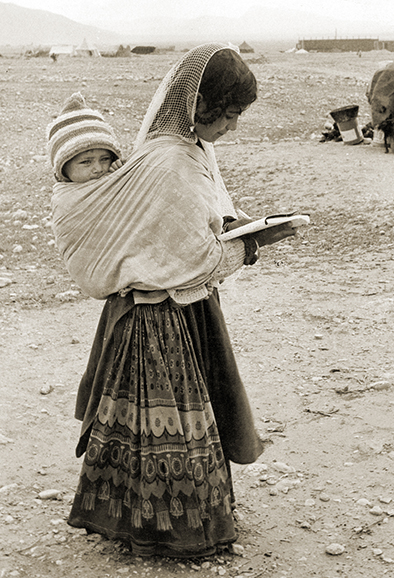| Nomadic elementary schools
In 1951, Bahmanbeigi started the first nomadic school in his own guest tent to teach reading and writing to his close relatives. The idea of establishing nomadic education was pursued more passionately by him when his neighbors asked to be taught as well.
The demand for having schools grew, therefore Bahmanbeigi asked for the financial support of the Ministry of Culture (Ministry of Education) which was left unanswered.
|
 |
|
He discussed the issue with Alan Gigan , Head of the Education Department of Truman's Point Four Plan, and was promised tents and classroom accessories provided that Bahmanbeigi would finance teachers' payments. He sought the support and assistance of the tribe's wealthy and influential ones and, at the same time, pursued his goal so persistently that he could manage to convince the minister to pass the Nomadic Education Plan in the winter of 1953.
Due to the political turmoil of 1953, the enforcement of this act was delayed and, even worse, based on the 4th article of the act, financing teachers' payments was assigned to the nomads themselves.
|
 |
|
The nomadic education was pursed under the title of "division" at the Province of Fars's Administration of Culture to 1967. After that, the education of nomadic children of the provinces of Kohgiluyeh and Boyer-Ahmad, Azerbaijan, Kurdistan, Lorestan, Ilam, Chaharmahal and Bakhtiari, Khuzestan, Kerman, Gorgan, and Sistan and Baluchestan was managed by Bahmanbeigi's program and the title of the responsible body changed from "division" to "administration".
Educational camps
The usefulness and efficiency of educational camps and group activities in students' morale, viewpoints, and perspectives is undeniable. These camps are also extremely attractive to nomadic children who live far from larger societies and are deprived from social advantages. Besides these general advantages, these camps were of higher value to the nomadic education and brought about great positive effects and assistance.
Educational camps
The usefulness and efficiency of educational camps and group activities in students' morale, viewpoints, and perspectives is undeniable. These camps are also extremely attractive to nomadic children who live far from larger societies and are deprived from social advantages. Besides these general advantages, these camps were of higher value to the nomadic education and brought about great positive effects and assistance.
These camps flourished at the time of nomadic education and were held in the territory of different tribes and in an attractive natural environment with all the portable facilities and equipment. In addition to all the students of the local schools, the students selected by the monitors, their teachers, and interested parents gathered at the campsite with the officials, teachers, and guests from different organizations.
The students and teachers engaged in healthy competitions in different areas such as mathematics, Farsi literature, theology, arts, etc. in the gathering tent.
Based on a research whose results were published in "the Strengths and Weaknesses of Nomadic Education" written by Soltanali Kazemi, a number of 94.7 percent of participants found these educational camps as the major reason of Iran Nomadic Education Administration's success.

The usefulness and efficiency of educational camps and group activities in students' morale, viewpoints, and perspectives is undeniable. These camps are also extremely attractive to nomadic children who live far from larger societies and are deprived from social advantages. Besides these general advantages, these camps were of higher value to the nomadic education and brought about great positive effects and assistance.
|
   |